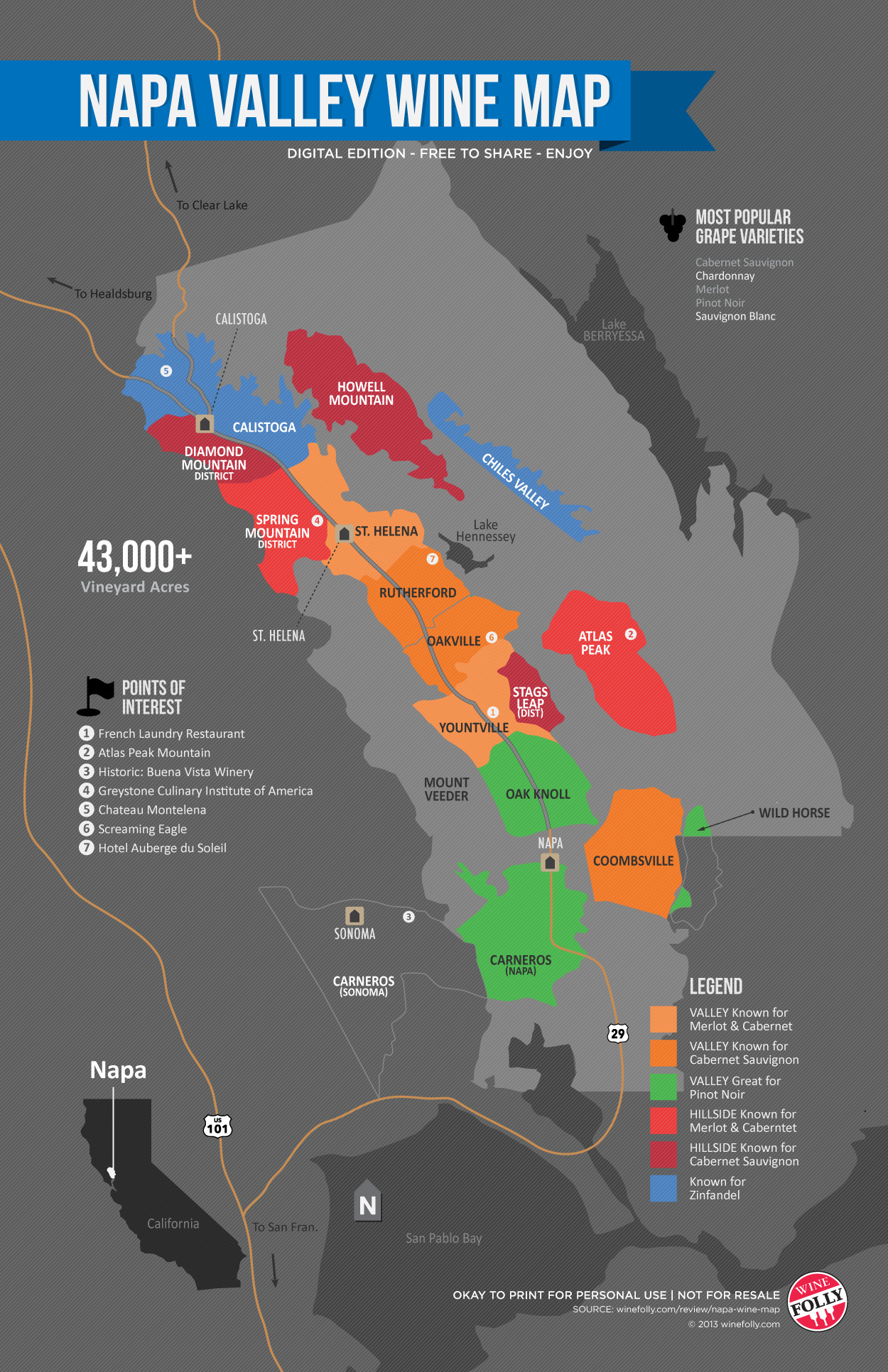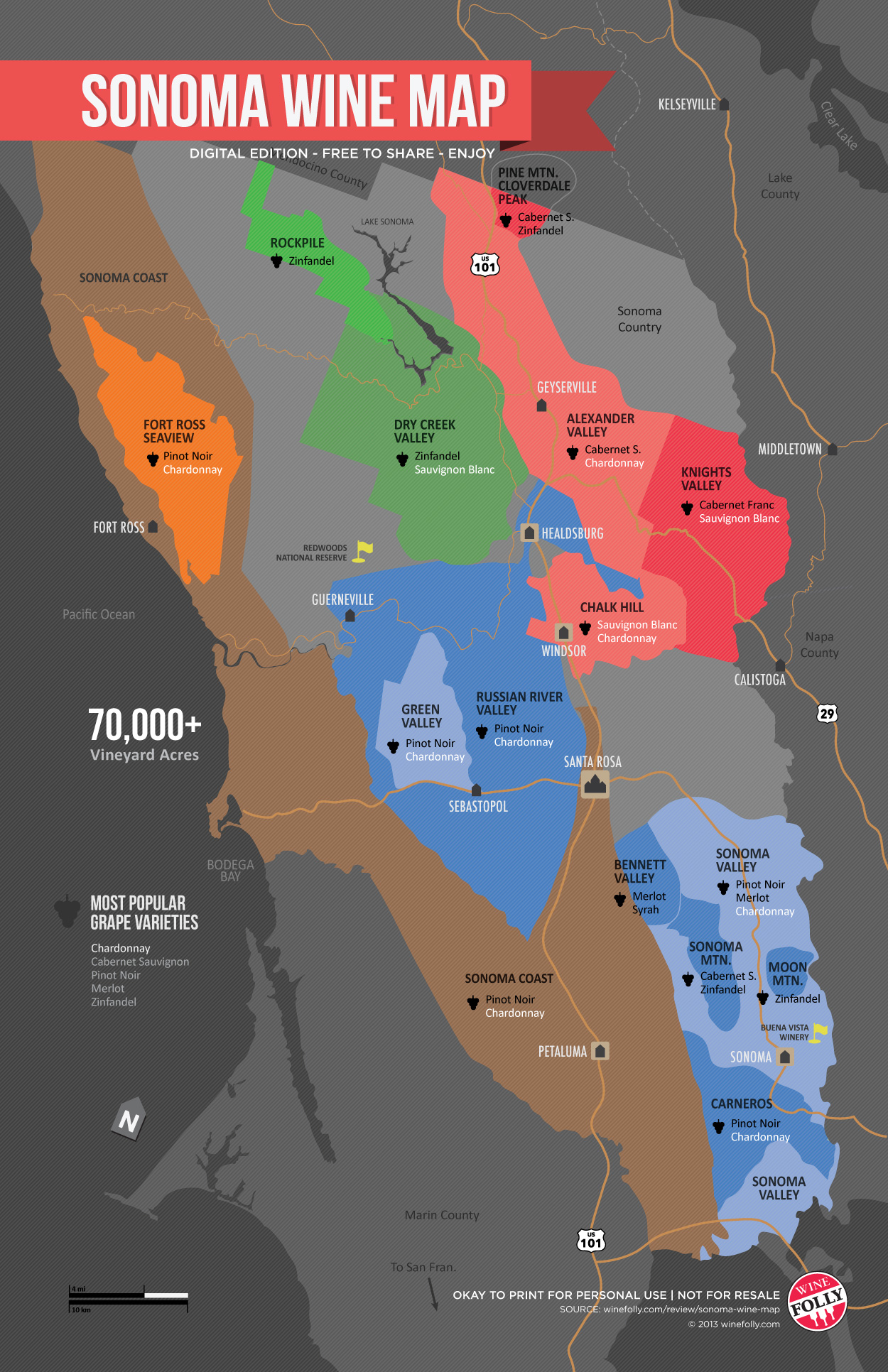Why does Napa have so much cargo?

Wine vines, or vitis vinifera, are grown all over California. The state contains over 105 American Viticultural Areas (AVAs) designated for grape growing. I’ve spent most of my life living amongst the three first; Napa Valley, Sonoma Valley, and the lesser-known Santa Cruz Mountains. However, in the eyes of the rest of the world only one stands out–Napa. Even in my WSET and SWE studies other “new world” countries get fairly equal coverage of their regions. For instance, the Barossa Valley of Australia is arguably the most important region on account of its prestigious Shiraz. However, in my study texts regions like Margaret River, Yarra and Clare Valley get about as much mention. Napa, on the other hand, dominates the American chapter. Other California regions as well as other states are given secondary treatment. One can argue these other regions are newer, smaller, or receive less critical praise for their quality of wine. All of which may arguably be true, except for one place–Sonoma.
Consider these facts:
- Wine in California was first made by Jesuits on their missions. Sonoma had three such missions. Napa, none.
- The first bonded winery in California (Buena Vista Winery) is in Sonoma.
- The oldest continuous operating winery (Simi Winery) is in Sonoma.*
- California’s best-known “local” grape Zinfandel was originally planted in Sonoma.
- Even though neither Sonoma nor Napa bear climates like the great regions (Bordeaux and Borgogne) of France, Sonoma has more similar meso- and micro-climates due to its proximity to the Pacific Ocean.
- Because of this climatic diversity, Sonoma County has more vitis vinifera varietals than Napa as well.
- Sonoma County is much larger than Napa County with about 60k vineyard acres planted vs. Napa’s 45k.
- Both counties share about the same amount of soil diversity.
- Both counties contain wineries that have won the most prestigious awards for their wines and winemakers (including my alma mater Chateau St. Jean).
- Both counties have roughly the same number of AVAs at 16.

When I first moved to Sonoma County in 2005, my wife landed a job as a graphic designer for Francis Ford Coppola’s winery, which was then fully located on the old Oakville Niebaum (Inglenook) estate in Napa County. Taking advantage of her employee perks, I opted for a free vineyard tour and tasting. During the tasting portion I got to know a gentleman next to me from out of state who asked where I was from:
- Me: I live in Sonoma
- Guest: I see. Where is that from here?
- Me: (incredulous) Five miles due West.
- Guest: Really? I had no idea it was so close.
- Me: Yeah, the counties are adjacent–we make some pretty good wine, too.
- Guest: Yeah, I’ve heard something about that.
At risk of beating him over the head with a half full $125 bottle of Rubicon, I disengaged from the conversation. The fact is, Napa Valley is the #2 tourist destination in all of California. Just think about that for a minute. #2 in the same state that contains San Francisco, Disneyland, Hollywood, Yosemite, Sequoia National Park, and Lake Tahoe to name a few. It has not only surpassed Sonoma as a wine country, it has become a California top destination of any genre.
What happened? How did Napa rise to such prominence? In the beginning of Jared Diamond’s book Guns, Germs, and Steel he recites a conversation he had with a Javan friend who asked, “Why does America have so much cargo?” To Javans wealth and possessions are evidently described as cargo. Since homo sapiens arrived in Java long before America, the question puzzled Diamond enough to research and write his book. In this series of blogs I intend to ask roughly the same question. Considering that Napa and Sonoma are adjacent to each other, vineyard planting started around the same time, and both are equally capable of producing world class wine, why does Napa have so much cargo?
In the next chapter I will start by exploring terroir. The right combination of climate, soil, and topography is essential to growing quality wine grapes. As the old saying goes, “You can make bad wine from good grapes, but you can’t make good wine from bad grapes.” I mentioned that both counties share soil diversity and have a Mediterranean climate, but is there any edge here for Napa?
*Sobon Estate in the Sierra Foothills makes the same claim that beats Simi by several years.
